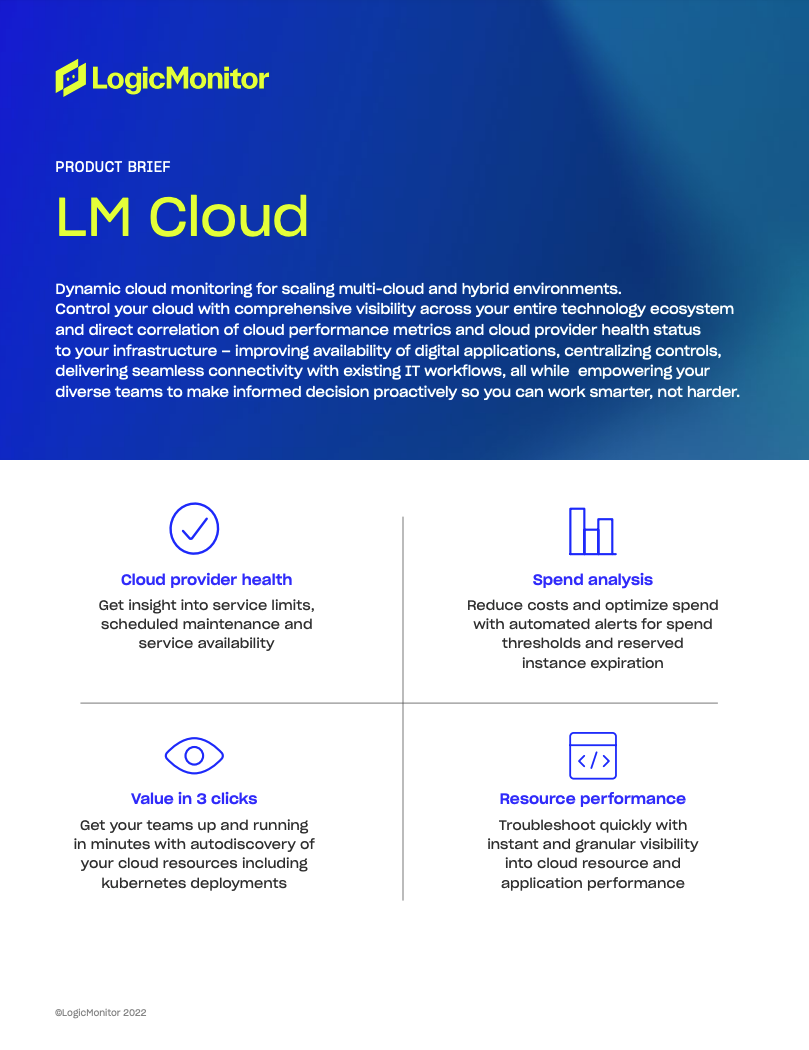product brief
Product Brief
Cloud monitoring
Dynamic cloud monitoring for scaling multi-cloud and hybrid environments.
Control your cloud with comprehensive visibility across your entire technology ecosystem and direct correlation of cloud performance metrics and cloud provider health status
to your infrastructure – improving availability of digital applications, centralizing controls, delivering seamless connectivity with existing IT workflows, all while empowering your diverse teams to make informed decision proactively so you can work smarter, not harder.




